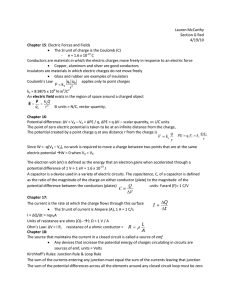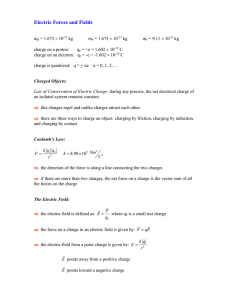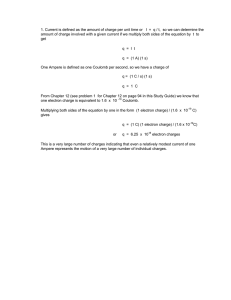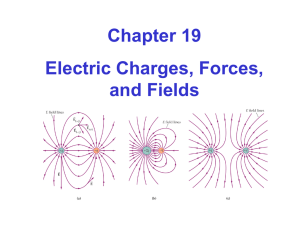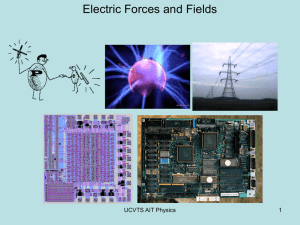• Charges at microscopic level • understand insulators, conductors
advertisement
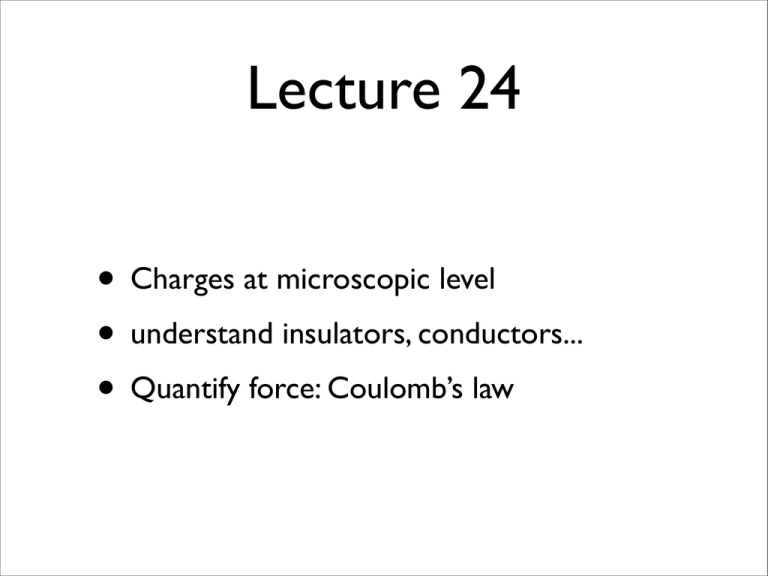
Lecture 24 • Charges at microscopic level • understand insulators, conductors... • Quantify force: Coulomb’s law • Charge at microscopic level I 2 types of charges behave like positive and negative numbers, e.g. metal sphere is neutral after receiving equal amounts of 2... • which is positive is convention (Franklin): glass rod positive, electron attracted to it electron negative • Atomic-level/fundamental unit of charge: +e for proton, -e for electron (inherent property) • no other sources of charge:q = Np e − Ne e = (Np − Ne ) e (charge quantization) • acquire positive charge by losing electron (ionization); negative ion (extra electron) • • • Charge at microscopic level II charging by rubbing: molecular ions from breaking of bonds charge conservation (transferred by electrons/ions):qwool = −qplastic charge diagrams: show net charge; conserve charge in next diagram • • • Insulators and Conductors insulators: charges immobile Conductors, e.g., metals: valence electrons weakly bound, respond to electric forces; salt water: ions... Charging conductors in electrostatic equilibrium: excess charge located on surface (if in interior, forces exerted causing move...) Discharging • human body (salt water) is (large) conductor:2 conductors in contact “share” charge • grounding: object connected to earth (conductor) thru’ conductor to prevent build-up of charge Charge polarization • • charged objects (either sign) force on neutral? separation of charges in neutral Electric Dipole • Polarization force attractive (both signs of charged rods) • • charged rod picks up paper (insulator)? atoms polarized (electrons still bound)...net force... electric dipole: two charges with separation Charging by Induction Coulomb’s law • equal in magnitude, opposite in direction, along line joining • attractive for opposite, repulsive for like (vectors) • • point charges: size ! separation between... static charges (! speed of light) Using Coulomb’s law • • Units of charge (derived from current): 9 2 2 −19 K = 9 × 10 N m /C e = 1.6 × 10 C Rewrite in terms of !0 = F = • 1 4πK = 8.85 1 |q1 |q2 | 4π"0 r 2 × 10−12 C2 /N m2 Superposition: multiple charges 1,2, 3... F̄net on j = F̄1 on j + F̄2 on j + ... • Strategy: pictorial representation (show charges, forces vectors...); graphical vector addition; x-and y-components
